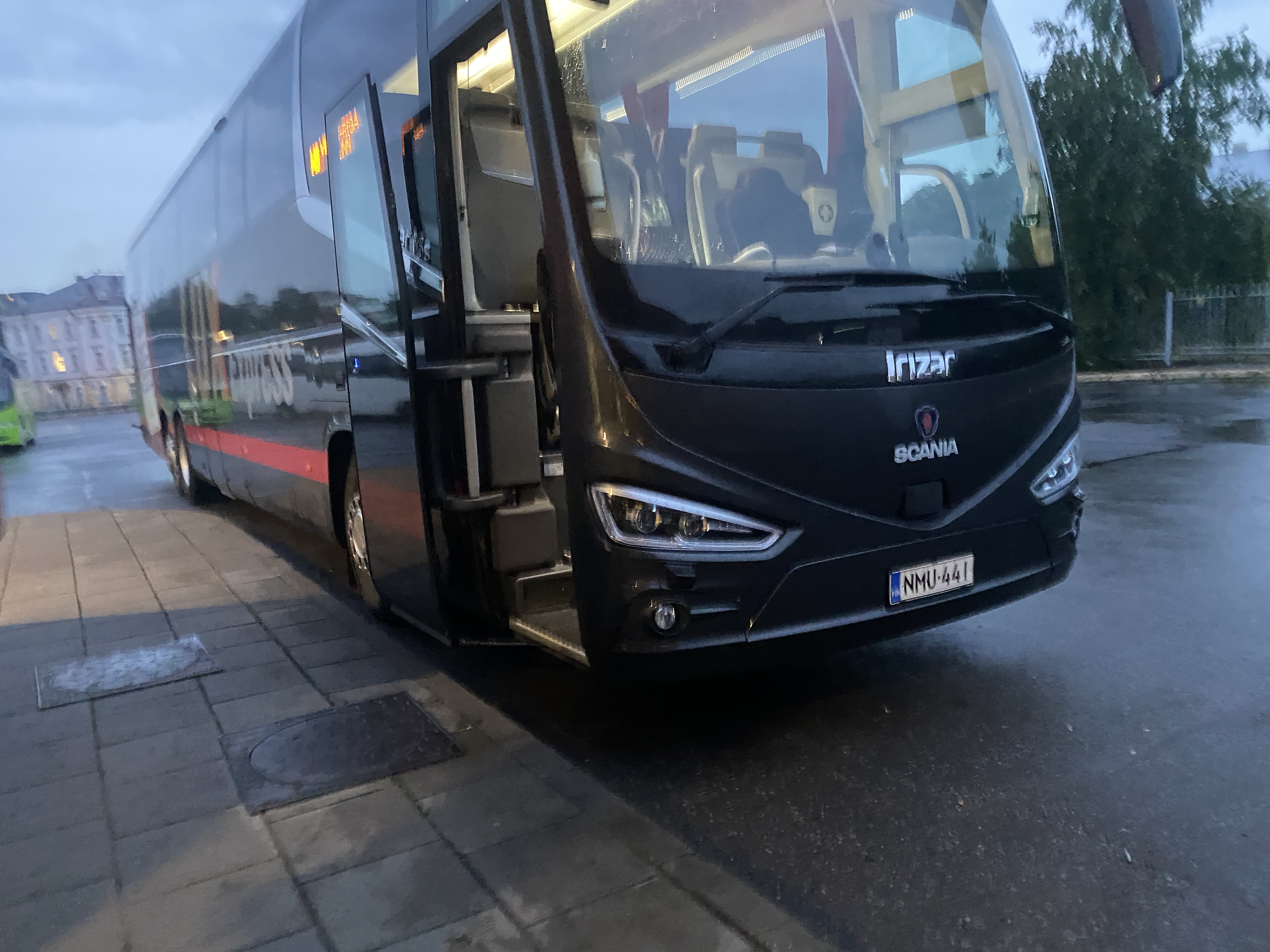On June 16 I went south to Lithuania for the second time to experience some semi-rare transit vehicles. Here’s a write-up of how it happened.
Preface
There are a few important railway terms to understand before reading this post: locomotive, coach, and multiple unit.
A locomotive is a rail vehicle designed to provide motive power, i.e its sole purpose is to pull or push other vehicles. These vehicles may be freight wagons, passenger coaches or engineering equipment. A train may have a single locomotive or multiple. Modern locomotives are powered by either a diesel engine (or multiple) or electric power. These can either be configured in a “double-headed” formation (2 leading locomotives) or a “top-and-tail” configuration (one at the front, one at the back).

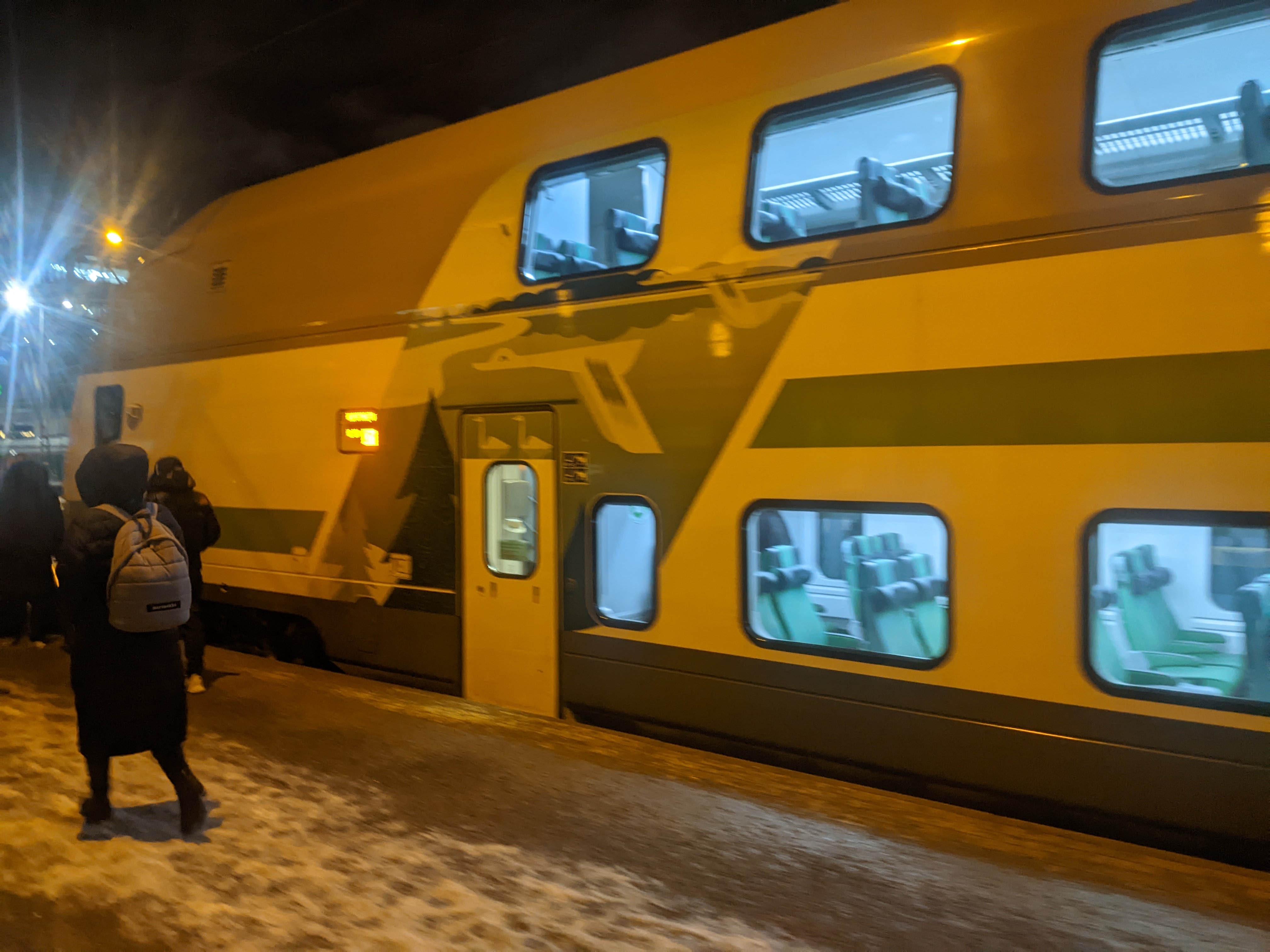
Multiple units
Multiple units are passenger rail vehicles that combine the functions of a passenger coach and locomotives. A common trait of these is distributed traction: rather than being pushed or pulled by a locomotive, multiple units have driving axles throughout the train, as a result providing better grip (like 4-wheel drive on a car vs 2-wheel drive) and therefore faster acceleration. Multiple units can make better use of space by having seating in all vehicles, since there’s no need for a locomotive at one end with no seating. Units can be coupled together to form longer trainsets, and unlike with locomotive-hauled sets this does not place more load on the engines: each unit still provides its power. However, units generally cannot be split: you cannot take vehicles out from in between. As with locomotives, there are diesel multiple units (DMU) and electric multiple units (EMU). There are also special cases of multiple units: such as French TGVs which are more similar to top-and-tail formations yet are still classified as EMUs, and Latvian DR1’s which only have traction from the “power car” at each end, which does have seating as well, but these DMUs can be reconfigured to have anywhere between 1 and 6 passenger carriages in between.
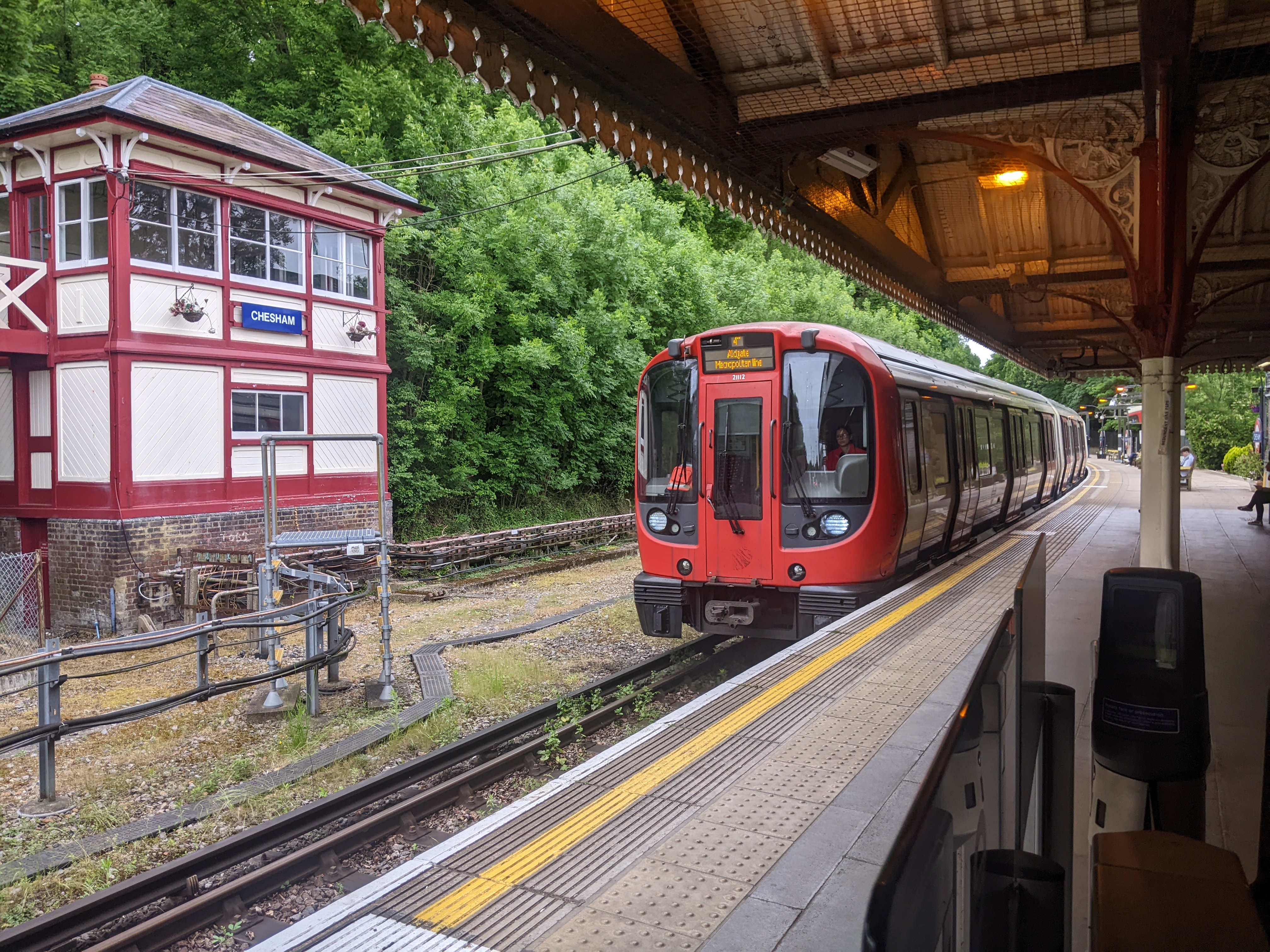
Background
My first visit to Lithuania took place over the Easter weekend in 2023. Seeing local transit was somewhat of a goal, but not the primary. On the first day of that trip I noticed a loco-hauled train headed to Klaipeda, and a few days later I asked on a Discord server for help with identifying these coaches. Serendipitously, a person from Vilnius saw my question. Not only did this person, who shall remain unnamed (because I don’t know their name) identify the vehicles, they gave me details on when this train runs and when it may be discontinued. The line from Vilnius to Klaipeda is currently being electrified, so once it’s complete it will be replaced by new trains from Stadler. Work on the line has already been ongoing for months which has caused reductions in frequency, but in June it will be paused, to allow for more trains to run in the summer season.
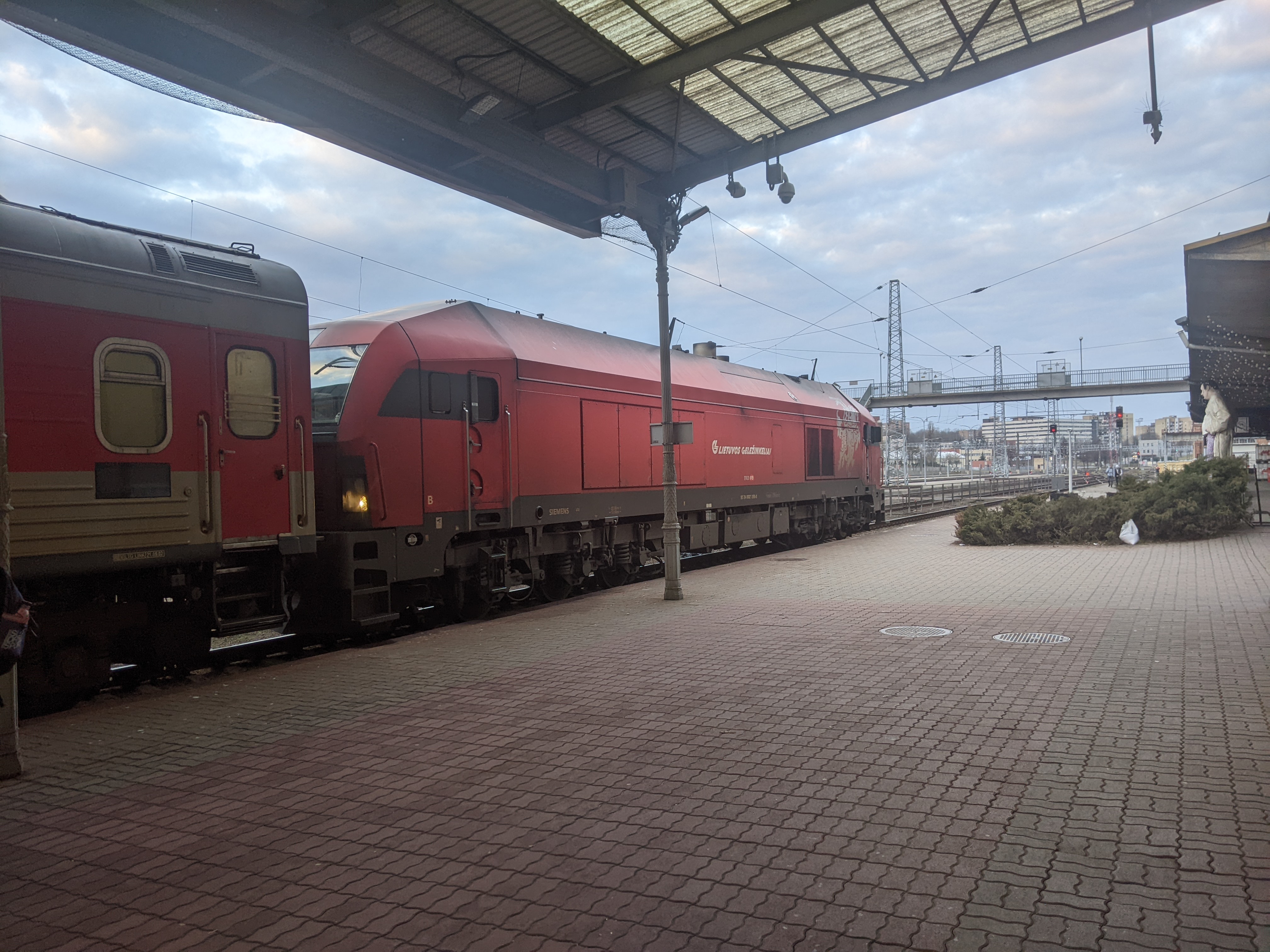
Entry 1, 07:45 UTC+3
For the second time this year I boarded the “Overnight Extreme”, as I have started calling it lately: the 22:30 Lux Express bus from Tallinn to Vilnius. A roughly 8 hour journey to the Lithuanian capital stopping only at Pärnu and Riga to head onwards to Klaipeda, a port city on the western coast of the country. I sat down in seat 33, hoping that 34 next to me would be free for at least a part of the journey. A large number of passengers left the bus in Pärnu, yet I was still stuck with the same gentleman next to me. 3 hours later in Riga, the number of passengers increased slightly but looking around it seemed that a few people did manage to have a seat pair to themselves. This unfortunately did not happen to me, and once past the Lithuanian border I gave up on sleeping and accepted that I will be staying up all the way to Vilnius. We had one more stop at the Panorama shopping centre where the gentleman who had been sitting next to me got off, so I guess my wish did technically come true. For the final 30 minutes of the journey I had the seat pair to myself and we arrived at Vilnius Coach Station at 6:50: 5 minutes early.
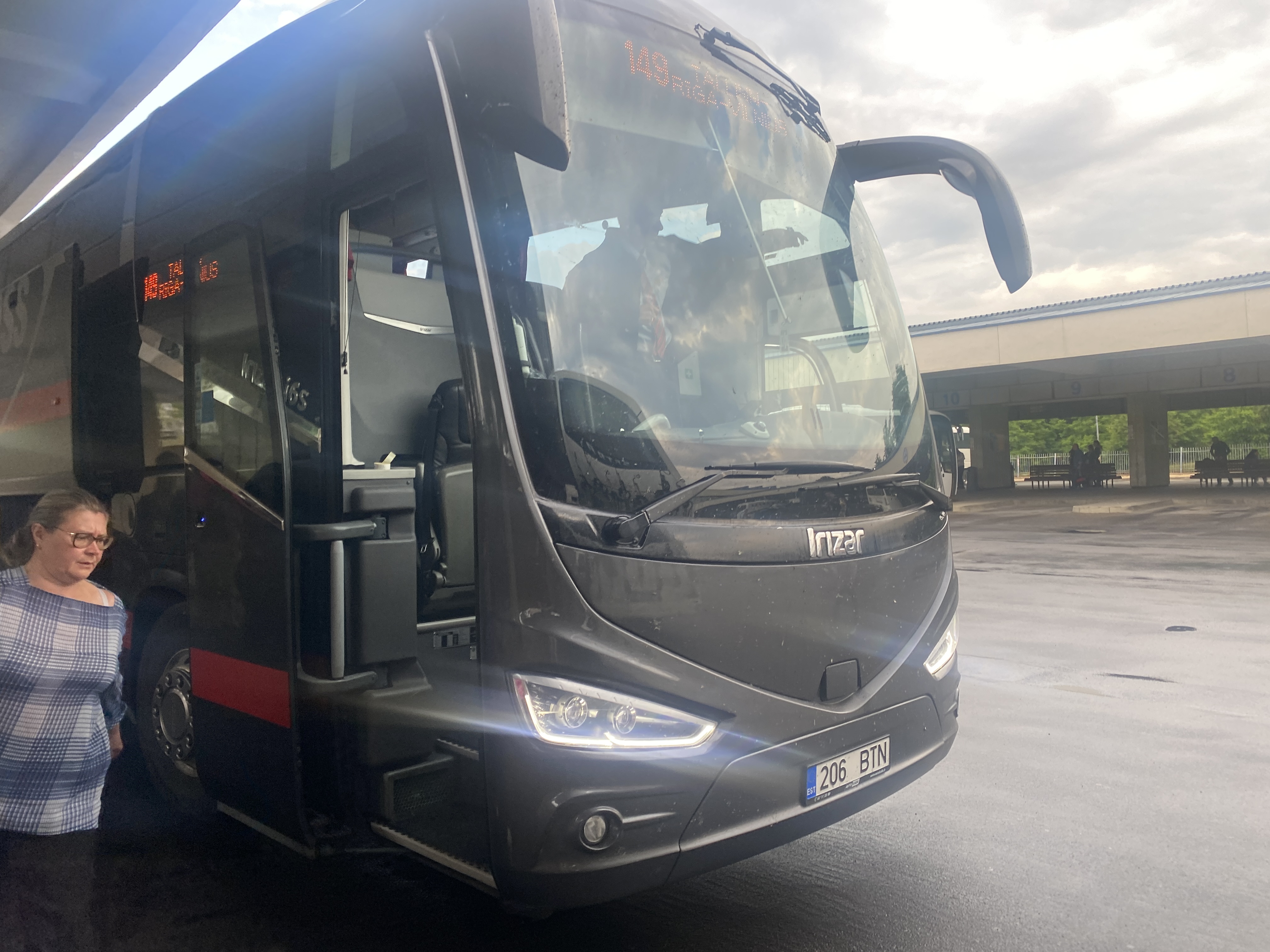

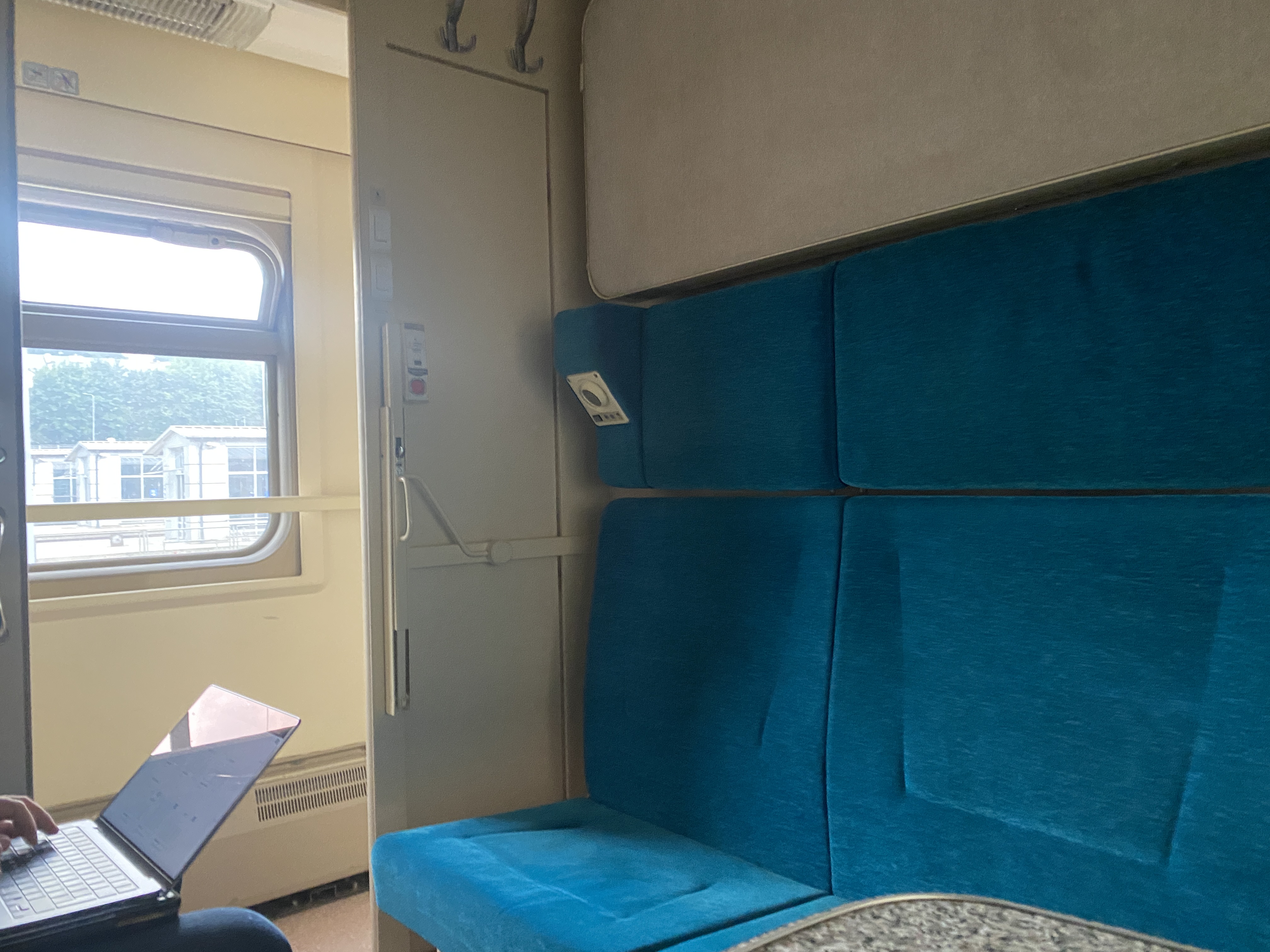
Entry 2, 13:17
Having written the last entry, I went to watch some videos I had downloaded to my iPad and managed to do a short tactical nap. At about 11:40, I heard an automated announcement for what I presumed to be Klaipeda, and since everyone else in my compartment was heading out I thought that we must be arriving at the terminus. However, as I stepped out I realised we were in fact at Kretinga: just one stop short of Klaipeda. Fortunately the conductor let me back in, with just seconds until departure. At that point I had the whole compartment to myself, so I lowered one of the backrests to form a bed, so I could lie down for the final 20 or so minutes.
Upon arrival at Klaipeda, right on time at 11:58, the locomotive detached from the coach formation to run around to the other side of the train. The coach formation remained at platform 2 at the station for cleaning. I had 2 missions in Klaipeda: finding food and if possible, a fridge magnet. The first seemed simple enough, an Iki grocery store was a 5 minute walk from the station. After grabbing some local chocolate and ice cream I went to look for the fridge magnet, which fortunately didn’t take long. Within the same building I saw a home goods store with magnets on display, and my Russian skills proved useful as the shopkeeper didn’t speak English. With the missions completed I headed back to the station, arriving at about 12:26. A small single-car diesel train had pulled into platform 1; this would depart at 12:30 for Šilutė. My train back to Vilnius departed at 12:45, with the exact same coach formation and a locomotive at the other end.
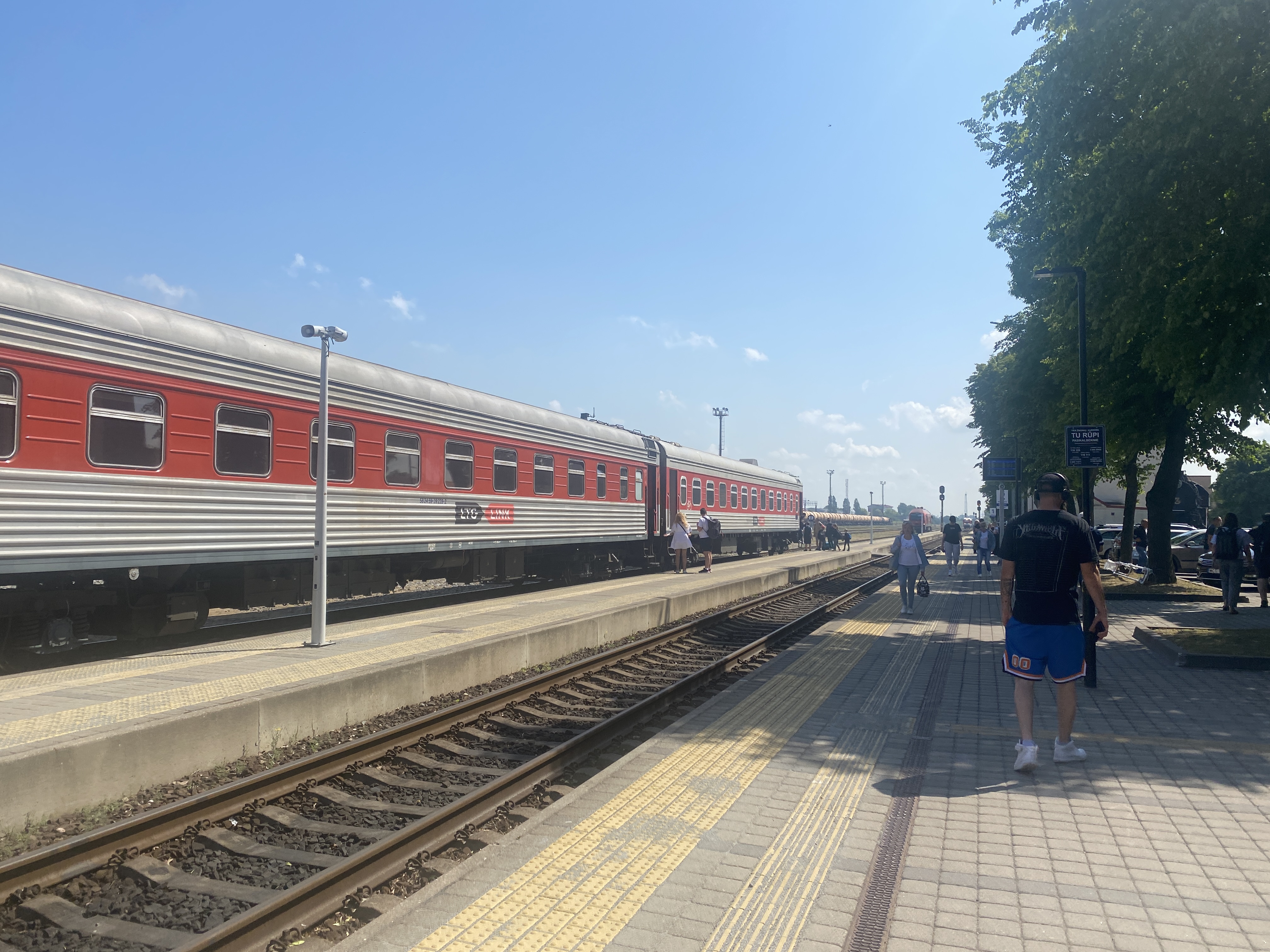
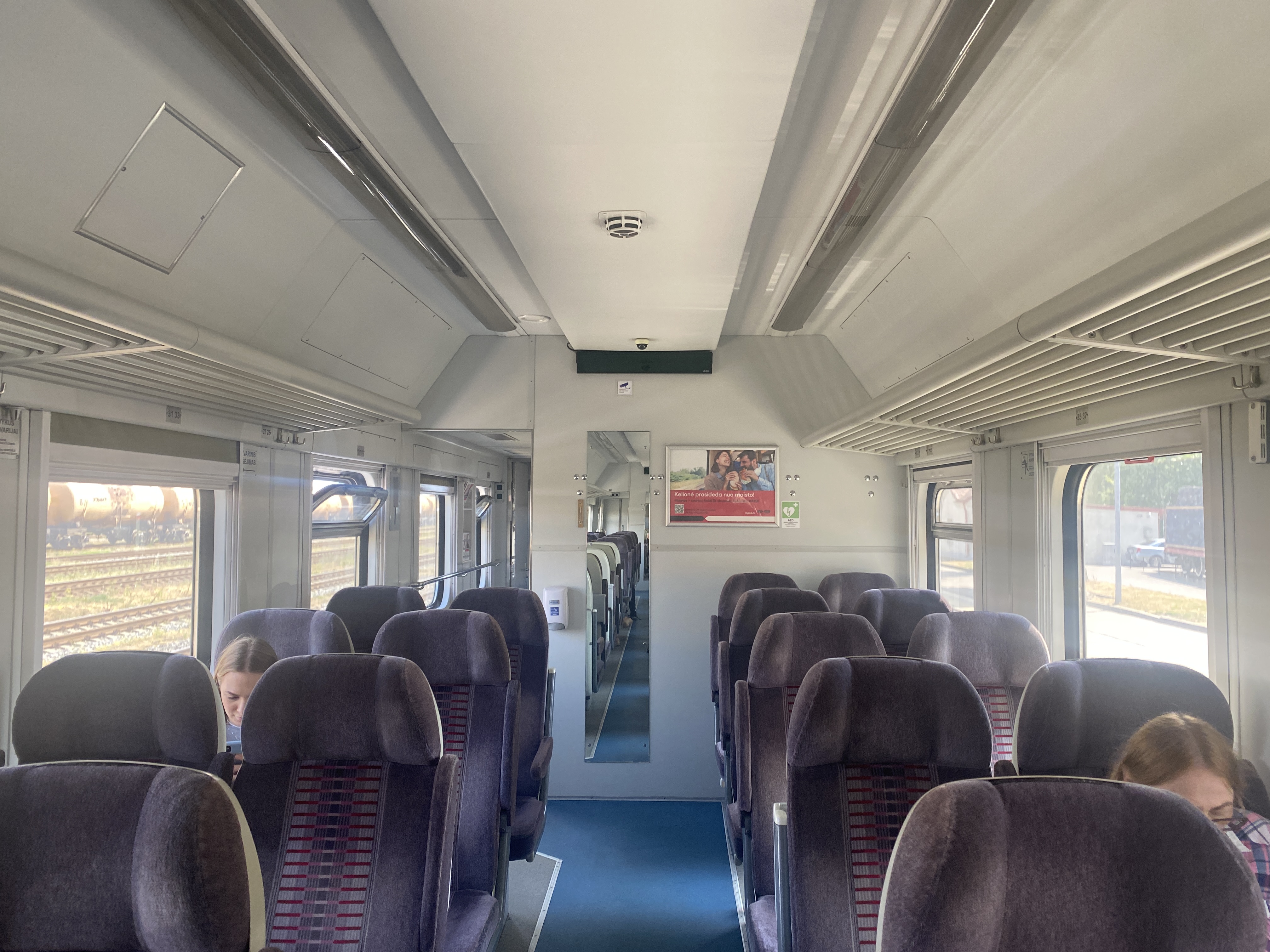
Entry 3, 08:26 June 17
I arrived 30 minutes late into Vilnius, as we were held at a station before Šiauliai. Once we did arrive, I had quite a lot of things to do before heading back. Originally I intended to visit the railway museum on the 3rd floor of the station, but as it closed at 6 I moved on to the next item: Škoda 15Tr trolleybus ride. Few of these articulated Škodas remain in service, however I did receive information from my unnamed source that they are operating on line 7 in peak hours. I managed to see one just outside the station, but had no time to ride it, as I was already due to move on to my next challenge.
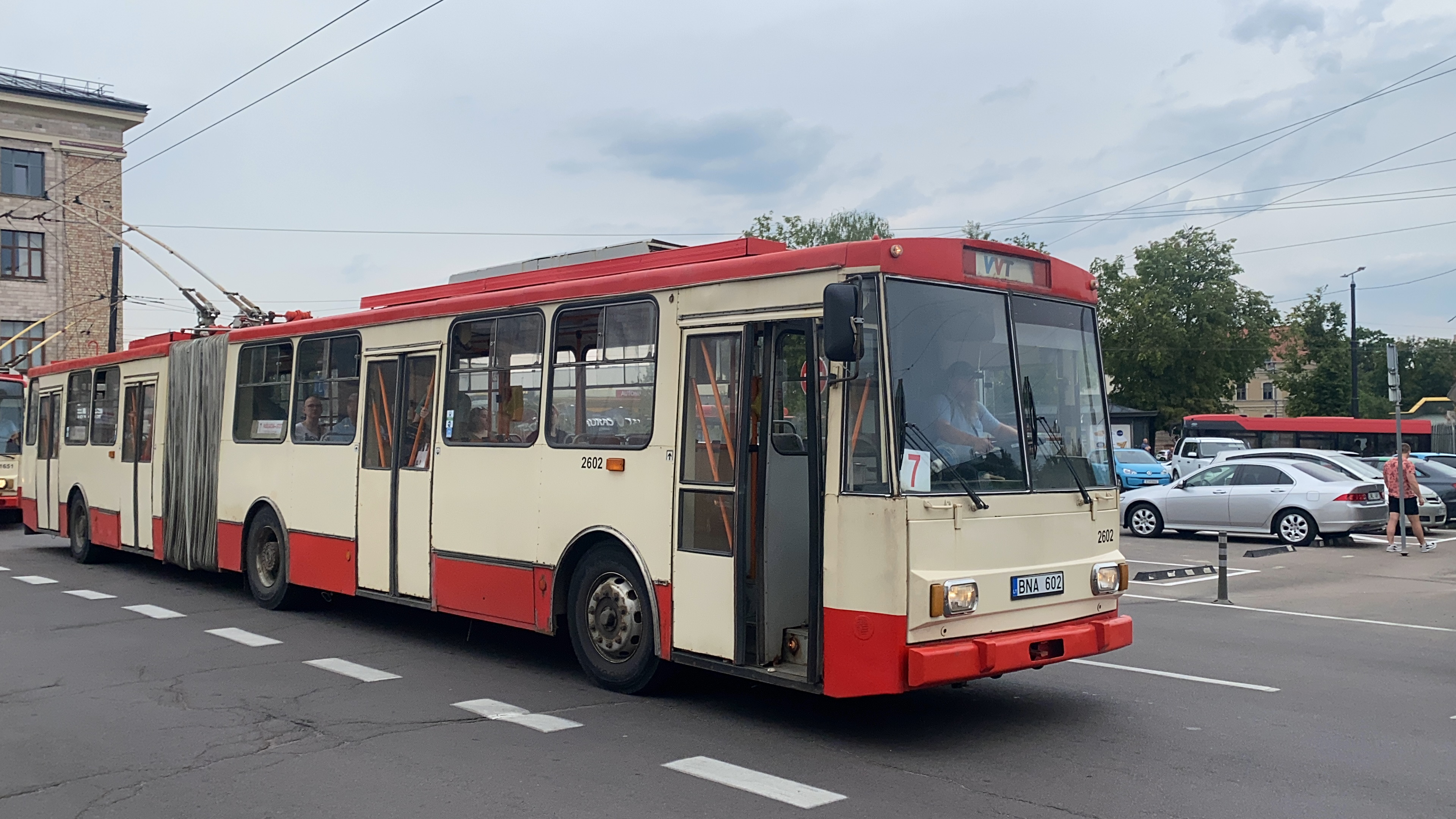

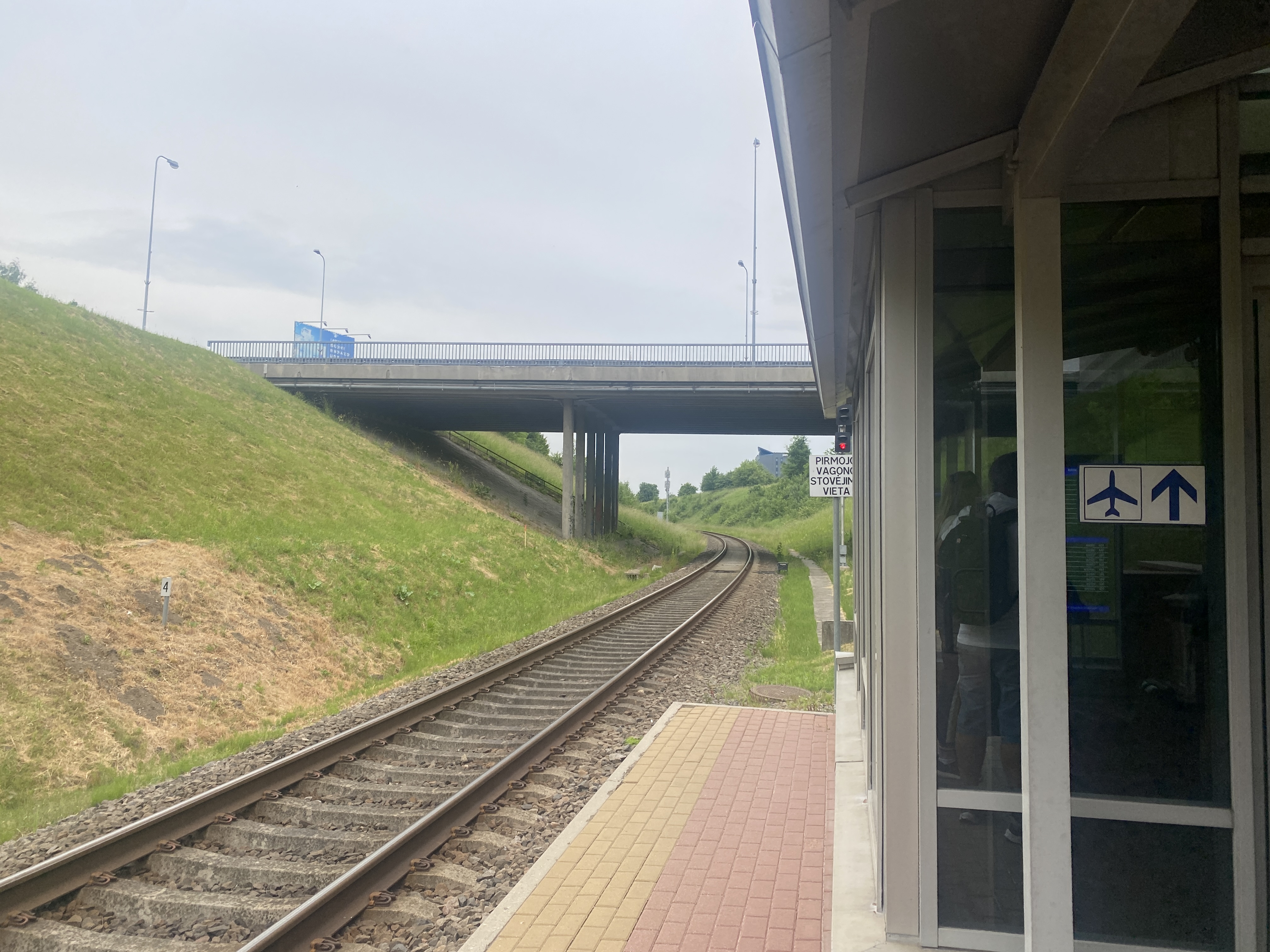


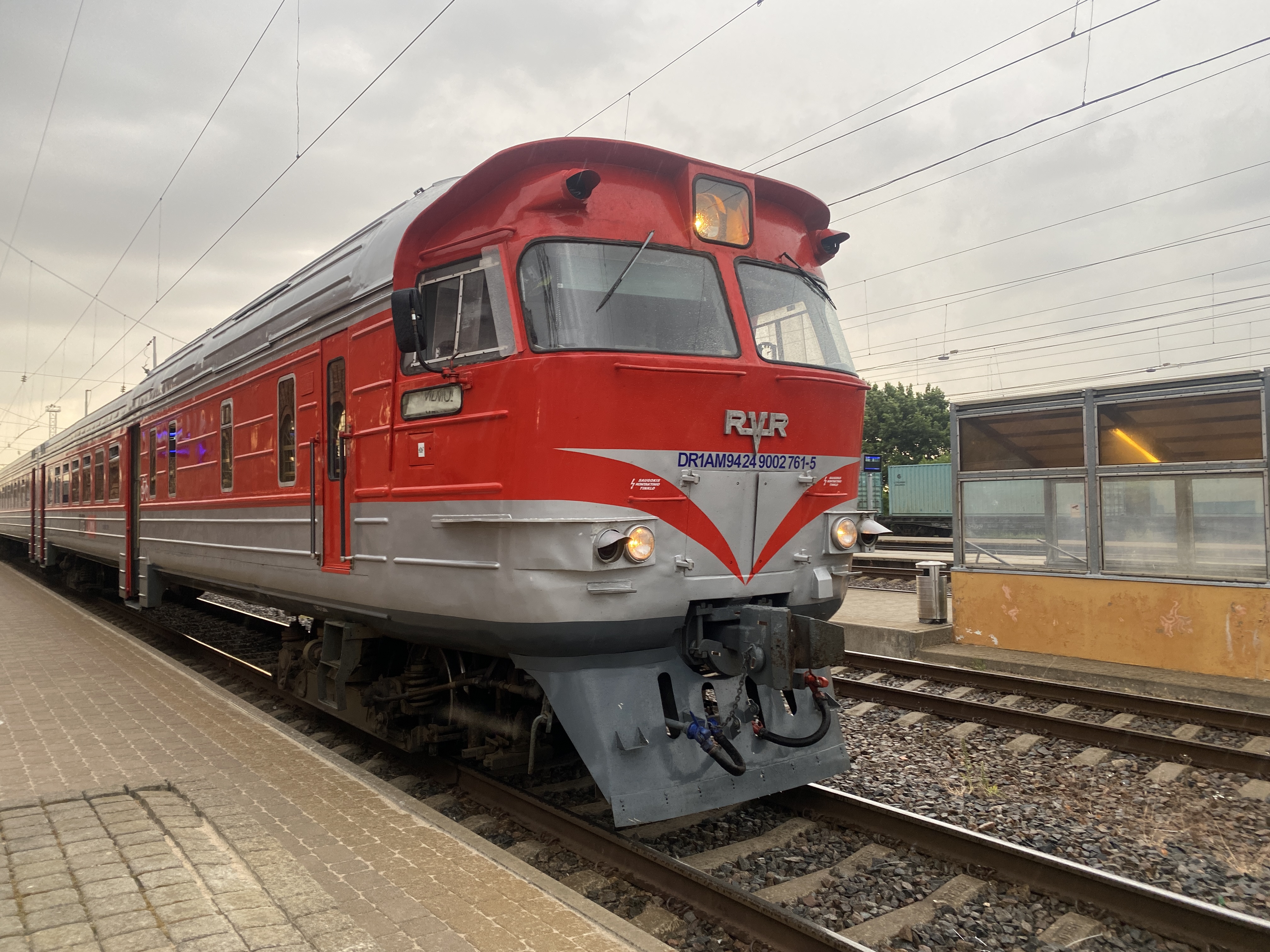
Except at the airport.
After looking at the airport’s website for shops and their opening hours, plus whether they stock souvenirs, I considered taking a Bolt Drive rental car to the airport and back. It was about a 10 minute drive, I figured 30 minutes there and back should something go wrong and still with time to spare. Instead however, I decided to eat one “real” meal at last and ordered a single cheeseburger from McDonald’s. As there was quite a long queue, I figured it could be a bit of a wait.
I finished the burger at 21:33, with an hour to spare still.
And so I thought why not, let’s try the airport. I booked the Audi A1, set up GPS navigation and headed to the airport. Arriving at around 21:50 I went inside the arrivals area to look for Narvesen, of which there are supposedly 3 at the airport. Indeed, they did have souvenirs, albeit the fridge magnet I bought cost €5. I headed straight back to the station, arriving a few minutes after 10 and having spent just €3.89 for the journey, plus the cost of the magnet itself. Now it truly was time to head to the bus station and await departure.
